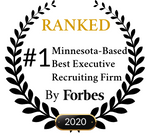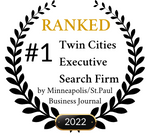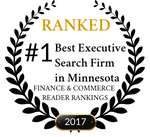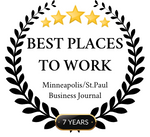
A well-crafted resume can be a job applicant’s powerful early advocate to employers and executive recruiters. More than a list of job titles and educational achievements, your resume must be carefully curated to make the first cut of the employer's Applicant Tracking System (ATS) and then catch the attention of hiring managers, headhunters, and human resources professionals. When written well, it showcases you, putting a spotlight on your most relevant qualifications and the value you bring, persuasively driving a narrative about how well your abilities align with the job for which you're applying. Wield it smartly and your resume can dramatically increase your chances of landing an interview and, ultimately, the job.
Trendy vs Timeless
Resume trends come and go, often driven by the evolving preferences of hiring managers and the adoption of new technologies in the job application process. Fads can range from using various graphic elements, like intricate designs and multiple colors, to the inclusion of buzzwords that promise to make your resume stand out. Yes, you do need a resume that captures attention. But over time, as a “standout idea” becomes the everyday norm, they stop being distinctive to hiring managers and headhunters, acting more as clutter to the human reader and potential confusion to the ATS. A modern, professional-level resume balances strong, clear content with a clean and reader-friendly format that resonates with today's hiring managers, who are looking for signs of genuine expertise and critical competencies relevant to their industry and their staffing needs. Understanding this balance is fundamental to crafting a resume that not only looks good but also effectively communicates your professional narrative to potential employers.
Ditch Elaborate Designs and Unconventional Formats
Complex and highly stylized resumes often hinder more than they help. While unique graphics or formatting might capture the attention of a recruiter who shares your design taste, they can easily have the opposite effect. Often, extravagant designs can come across as unprofessional, detracting from the core mission of the resume – to communicate the fact that you are the most qualified candidate and best fit for the role. Also, because today’s Applicant Tracking Systems are designed to scan and rate resumes based on the presence of specific keywords and straightforward formatting, a unique design may distort or hide critical information, leading the ATS to reject an otherwise qualified candidate.
DO: Use a clean, streamlined resume template. This type of template will make it easy for the screener to find, read, and appreciate your strengths by presenting them in a clear and logically organized manner. This also makes it easier for ATS systems to correctly identify your qualifications and achievements. The best resume templates enable you to tailor the content without sacrificing clean aesthetics, creating an optimal balance between personalization and a crisp, accessible format. Search for templates that serve your content rather than overshadowing it. This strategic choice will more accurately reflect your professionalism and adaptability in a corporate environment.
Avoid Overused Buzzwords
Unless the acronyms and adjectives in your resume draft are critical to helping the recruiter or employer understand your qualifications, three words of advice: delete, delete, delete. Check out this partial list of words and phrases that have stopped meaning anything to the decision-makers reading your resume. If they’re in your resume, get rid of them. You have better options. In some instances, you’ll need to replace the deleted word with something meaningful. Other times, just let it go.
- Hardworking
- Team player
- Self-starter
- Detail-oriented
- Dynamic
- Results-driven
- Proactive
- Strategic thinker
- Innovative
- Highly qualified
DO: establish that you possess these qualities by quantifying your achievements. Use active language and clear examples that demonstrate the impact of your work. For instance, rather than stating you are 'results-driven,' describe how you surpassed sales targets by a certain percentage or completed a project under budget and ahead of schedule. Illustrate your role as a 'team player' by detailing a collaborative project that led to company recognition or a significant improvement in team productivity. To claim 'innovative,' point to a process or product you developed that enhanced efficiency or revenue. Concrete achievements like these provide compelling evidence of your skills and work ethic, speaking volumes more than generic adjectives.
Scrap Objective Statements
Objective statements, once a resume staple, are no longer useful. These brief declarations about a job seeker's career goals often do not align with the employer's needs and come across as self-centered. Remember that, when you’re applying for jobs, you are marketing a brand: your, and promoting yourself as the best candidate. Keep your focus on what you offer the employer, not what you want them to be or do for you. It's crucial to show how your skills and experiences align with the company's objectives and contribute to its success.
DO: give that space to a “professional summary” or “profile statement” that highlights your key qualifications, achievements, and the value you bring to a potential employer. This brief statement should be tailored to each position for which you’re applying, reflecting the employer's language and requirements.
Eliminate Long Lists of Duties
Listing every job duty in your resume fails to convey the true value you brought to your past roles. It can overwhelm (or really, underwhelm) the recruiter with redundant or irrelevant information, making it difficult to discern your professional impact. Instead, curate a focused list of responsibilities that underscores your achievements and the outcomes of your work. By presenting strategic highlights rather than a comprehensive catalog, you guide potential employers toward recognizing your unique contributions and the measurable benefits you can bring to their organization. Quantifying these experiences, such as indicating how you streamlined a process and saved the company time or money, showcases your capability to effect positive change and demonstrates the tangible impact of your efforts.
DO: Highlight measurable achievements and specific contributions. This approach not only demonstrates your capability but also gives employers a clear picture of your potential impact on their business. For instance, if you've positively affected your previous company's bottom line, be precise about it—"Increased annual sales by 15% through strategic customer engagement techniques." Employers appreciate candidates who can articulate their value in quantifiable terms, as it suggests a level of professional maturity and readiness to take on results-oriented challenges in their organization. Remember, your resume is your personal marketing document, and every statement you include should be aimed at selling your strengths and your fit for the job in question.
The same goes for the rest of the irrelevant information
Any information on your resume that does not enhance your position as a strong candidate for the job you are targeting is hurting you. Get rid of it. This might include:
- Unrelated job responsibilities: If previous job tasks do not align with the skills or experiences the prospective role requires, omit or minimize them to make room for more pertinent contributions.
- Personal details and intertests: Sharing details such as marital or family status, or your age is unwanted because it can invite unintended biases. Unless your hobbies or other personal activities directly relate to the job or the company's industry, strongly consider leaving them out, too.
- Outdated career accomplishments: Achievements that are more than 10-15 years old or are unrelated to your current career path might not be relevant for the position.
- References: The statement "References available upon request" is redundant; employers assume you will provide references if asked.
- High school education: If you have completed higher education, omit your high school information unless it is directly relevant to the job.
The key is to strategically choose content for your resume that reinforces your qualifications for the role you seek and strengthens (instead of diluting) the recruiter’s focus on the experiences and skills you bring that translate to added value for the potential employer.
DO: Tailor your resume content to match the job, company, and industry. This takes more than just regurgitating the job description; it involves effectively communicating how your past experiences and achievements will translate into success in the prospective role. Take the time to research the company's mission, culture, and any recent accomplishments or challenges it's faced, and then reflect this understanding in your resume. For instance, if the company values innovation, highlight your innovative projects or ideas that improved outcomes at your previous jobs. Similarly, if the role is at a startup that requires wearing multiple hats, emphasize your adaptability and cross-functional skills. By taking a thoughtful and personalized approach to each application, you demonstrate to the employer that you are genuinely interested in the position and have taken the initiative to align your presentation with their specific needs and values.
Cut Out Obsolete or Basic Technology Skills
In a rapidly evolving digital landscape, proficiency in legacy software, and outdated, programming languages often hold little value to prospective employers focused on cutting-edge technology. Listing outdated technical skills can clutter your resume and distract from your current expertise.
The same goes for basic, everyday, entry-level tech skills. Honestly, when I see a candidate for a senior position listing their proficiency with the basics of Microsoft Office Suite, it doesn’t inspire my confidence. It makes me wonder why anyone would highlight it. Would you note that you know how to dress professionally? No. Let us take for granted that you’ve got the basics nailed.
DO: Emphasize current, high-priority technical proficiencies. Rather than listing every software or tool you've ever used, direct the recruiter's attention to skills demonstrating your adaptability and ongoing learning in tech. Name those that are pertinent to the job you are targeting, being sure to focus on technologies that showcase your ability to work with the latest developments in your field and your agility in continuously learning new ones. By keeping the skills section of your resume updated with technologies that are relevant in today’s market, you demonstrate to employers that you are well-equipped to contribute effectively from day one and have a forward-thinking approach to your professional skill set.
At SkyWater Search Partners, we are always on the lookout for extraordinary talent. If it’s time for you to take that next step in your career, or if you’re just wondering if it might be, we would love to see your resume and learn more about you! Reach out to one of our executive recruiters who is an expert in your field!








